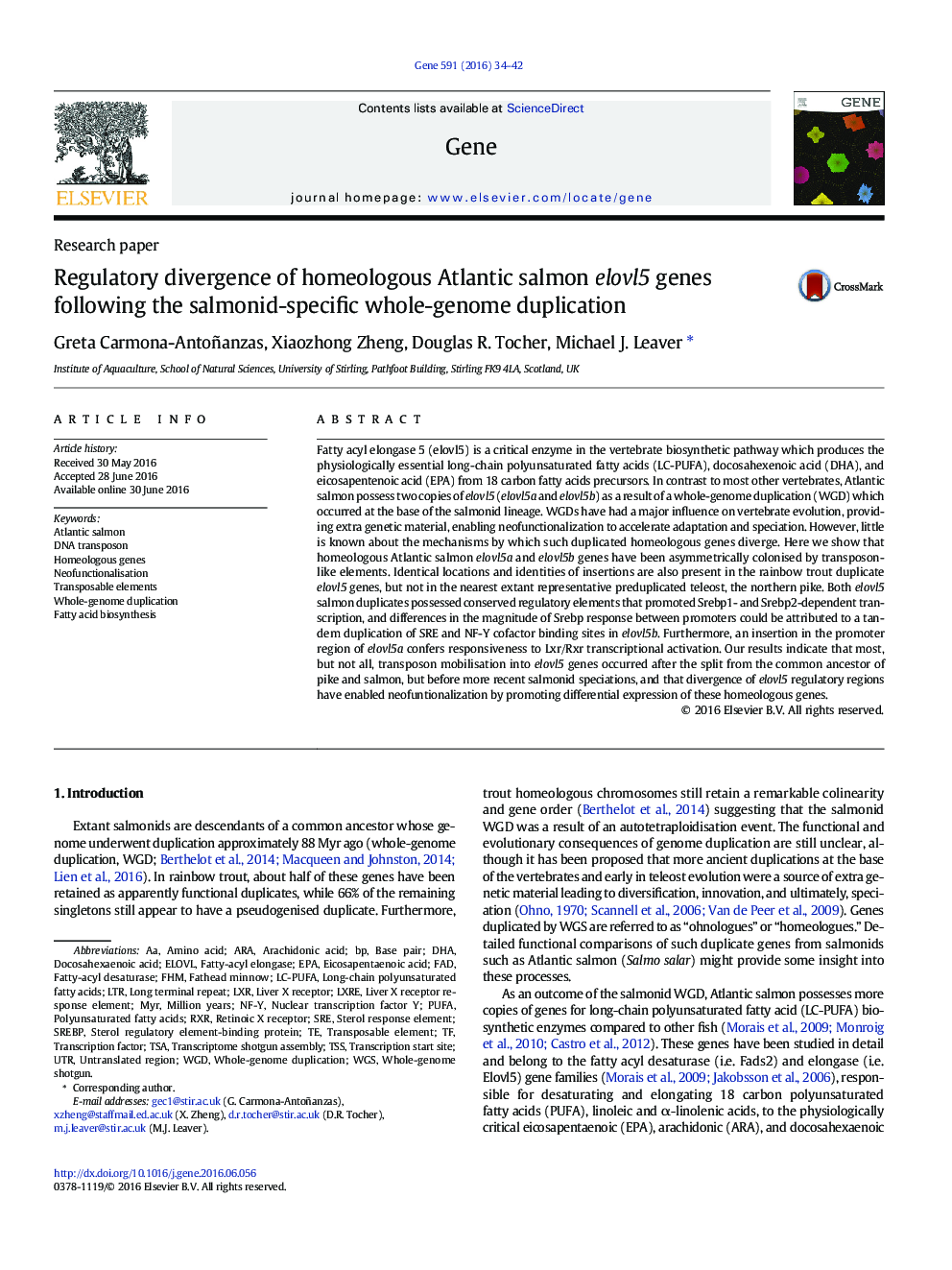| Article ID | Journal | Published Year | Pages | File Type |
|---|---|---|---|---|
| 2814812 | Gene | 2016 | 9 Pages |
•Ohnologous Atlantic salmon elovl5 genes have been differentially colonized by transposons.•Duplicated elovl5 genes have divergent promoters resulting in activation by Srebp and Lxr transcription factors.•Differential regulation by srebp and Lxr can explain the divergent expression patterns of duplicated elovl5 genes in vivo.
Fatty acyl elongase 5 (elovl5) is a critical enzyme in the vertebrate biosynthetic pathway which produces the physiologically essential long-chain polyunsaturated fatty acids (LC-PUFA), docosahexenoic acid (DHA), and eicosapentenoic acid (EPA) from 18 carbon fatty acids precursors. In contrast to most other vertebrates, Atlantic salmon possess two copies of elovl5 (elovl5a and elovl5b) as a result of a whole-genome duplication (WGD) which occurred at the base of the salmonid lineage. WGDs have had a major influence on vertebrate evolution, providing extra genetic material, enabling neofunctionalization to accelerate adaptation and speciation. However, little is known about the mechanisms by which such duplicated homeologous genes diverge. Here we show that homeologous Atlantic salmon elovl5a and elovl5b genes have been asymmetrically colonised by transposon-like elements. Identical locations and identities of insertions are also present in the rainbow trout duplicate elovl5 genes, but not in the nearest extant representative preduplicated teleost, the northern pike. Both elovl5 salmon duplicates possessed conserved regulatory elements that promoted Srebp1- and Srebp2-dependent transcription, and differences in the magnitude of Srebp response between promoters could be attributed to a tandem duplication of SRE and NF-Y cofactor binding sites in elovl5b. Furthermore, an insertion in the promoter region of elovl5a confers responsiveness to Lxr/Rxr transcriptional activation. Our results indicate that most, but not all, transposon mobilisation into elovl5 genes occurred after the split from the common ancestor of pike and salmon, but before more recent salmonid speciations, and that divergence of elovl5 regulatory regions have enabled neofuntionalization by promoting differential expression of these homeologous genes.
